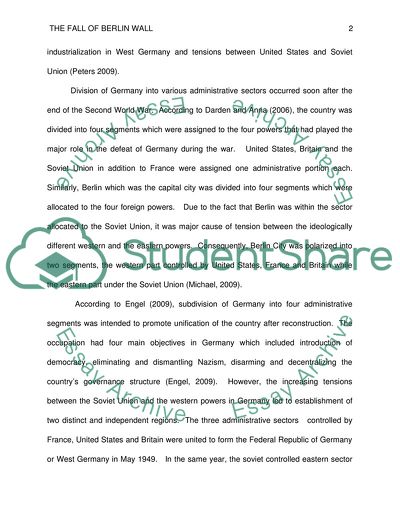Cite this document
(The Fall of Berlin Wall and Its Impact on the 1989 Revolution Research Paper, n.d.)
The Fall of Berlin Wall and Its Impact on the 1989 Revolution Research Paper. Retrieved from https://studentshare.org/history/1596391-the-fall-of-berlin-wall-and-its-impact-on-the-1989-revolution
The Fall of Berlin Wall and Its Impact on the 1989 Revolution Research Paper. Retrieved from https://studentshare.org/history/1596391-the-fall-of-berlin-wall-and-its-impact-on-the-1989-revolution
(The Fall of Berlin Wall and Its Impact on the 1989 Revolution Research Paper)
The Fall of Berlin Wall and Its Impact on the 1989 Revolution Research Paper. https://studentshare.org/history/1596391-the-fall-of-berlin-wall-and-its-impact-on-the-1989-revolution.
The Fall of Berlin Wall and Its Impact on the 1989 Revolution Research Paper. https://studentshare.org/history/1596391-the-fall-of-berlin-wall-and-its-impact-on-the-1989-revolution.
“The Fall of Berlin Wall and Its Impact on the 1989 Revolution Research Paper”. https://studentshare.org/history/1596391-the-fall-of-berlin-wall-and-its-impact-on-the-1989-revolution.


